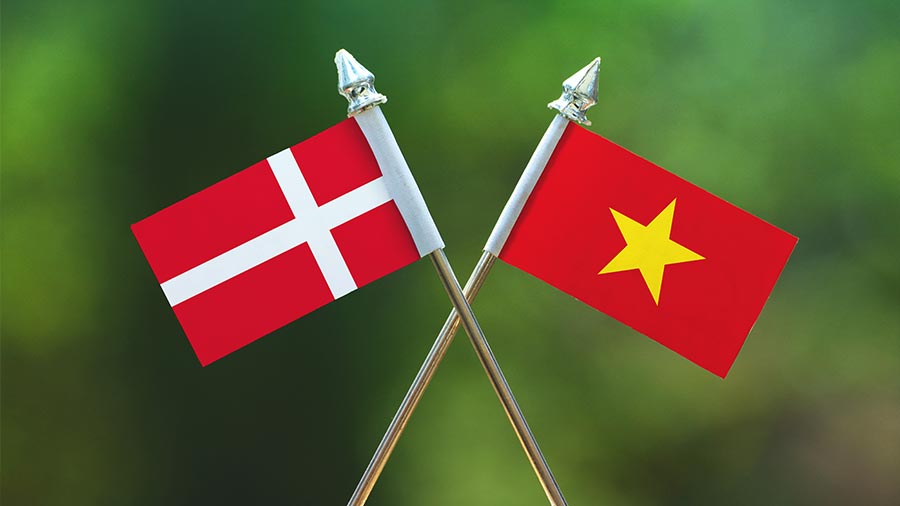Opportunities and Challenges Lie Ahead for Vietnam’s Rice Exports
By Patricia Ieong
HANOI – Vietnam, one of the largest rice exporters in the world, recorded rice exports of 307,000 tons last month, bringing in US$127.5 million. This represented a drop of 30.5 percent compared to the same period last year. The Vietnam Food Association (VFA) forecasts that February exports will be at a similar level, between 300,00 to 350,000 tons. While quantities of rice exports have declined, the prices of Vietnamese rice have remained relatively stable at an average price of around US$415 per ton in January.
The drop can be viewed against a larger downward trend in Vietnamese rice exports. In 2012, Vietnam’s rice exports hit a record high of 7.72 million tons, putting it as the world’s second-largest rice exporter behind India. Last year, the figure dropped to just 6.68 million tons, a decline of 13 percent, and falling short of the government’s 7.5 million ton target by 820,000 tons. Vietnam has its work cut out if it hopes to meet this year’s 7 million ton target, as it would need to export over 600,000 tons on average in each of the remaining months to do so.
 RELATED: Dezan Shira & Associates’ Business Advisory Services
RELATED: Dezan Shira & Associates’ Business Advisory Services
Vietnam’s Export Markets
The general decline in 2013 exports was caused by sharp drops in exports to the Philippines and Malaysia, Vietnam’s traditional export markets, while Indonesia stopped importing rice altogether. In the first nine months of 2013, the Philippines’ rice exports dropped by a dramatic 63 percent, while Malaysian exports decreased by 35 percent. A large part of the reduced demand from these countries can be attributed to boosts in domestic production by the Philippines and Indonesia.
Demand from China remained strong, as the country imported over 2 million tons of rice — almost a third of Vietnam’s total rice exports. Moreover, the VFA has predicted that Vietnam could stand to benefit from the recently canceled deal between China and Thailand involving 1.2 million tons of rice. Thailand’s National Anti-Corruption Commission announced the cancellation earlier this month, following a probe into the transparency of rice deals between China and Thailand.
However, cautious of relying too heavily on the Chinese market, Vietnam is also looking to send its exports further afield to Africa. Vietnam’s rice has already been exported to 30 of the 55 African countries, and the government recently signed memorandums of understanding to export rice to Guinea and Comoros. Further trade delegations to Angola and the Ivory Coast will be organized this year, in a bid to close deals with these countries.
The Price of Rice
According to the VFA, the 6.68 million tons of rice exports in 2013 fetched a US$2.89 billion (FOB basis), making the average price per ton US$433. Vietnam’s rice has historically been sold at lower prices than comparable rice from Thailand, India, China and Cambodia. This is because Vietnamese strains tend to be of a lower quality, and it is also believed that Vietnamese rice may contain higher concentrations of mercury and pesticide.
However, while the cancellation of the Thailand—China rice deal could benefit Vietnam, it could also mean fierce price competition lies ahead as Thailand sells off its massive rice stockpiles, which were created as a result of the government’s rice-buying subsidy scheme. Chareon Laothamatas, president of the Thai Rice Exporters Association, said it could be up to five years before Thailand’s stockpiles, estimates of which come to around 20 million tons, are sold off.
The VFA has advised that Vietnam must adopt measures such as developing high-quality seedlings and growing varieties that are in high demand in order to remain competitive. To that end, the VFA signed an agreement with 13 provinces to co-operate on rice production and consumption management. Many Vietnamese enterprises have also been trying to develop organic rice, which is in high demand in global markets and can sell at a premium. Thus far, their efforts have met with a limited degree of success — while Vietnamese organic rice fulfilling the U.S. Department of Agriculture’s organic requirements has been cultivated and even exported to the UK, it has only been in very small quantities. Large scale organic farming would require further and more substantial investment, and commercial banks have so far viewed the project with skepticism. Nevertheless, with Thailand’s enormous rice stockpiles skewing global supply and putting pressure on prices, Vietnam will find it hard to compete solely on price, and will need to shift its focus on quality.
You can stay up to date with the latest business and investment trends across Vietnam by subscribing to Asia Briefing’s complimentary update service featuring news, commentary, guides, and multimedia resources.
Related Reading
Vietnam-U.S. to Promote Trans-Pacific Partnership Agreement
HSBC Forecasts Continued Growth for Vietnamese Exports
Vietnam’s Trade Future Looks Bright with U.S. and Chile as Prime Markets
- Previous Article Sky-High Competition: Vietnam’s Budget Airlines
- Next Article Revised Laws Could Help Foreigners Build Vietnam’s Real Estate Sector
































